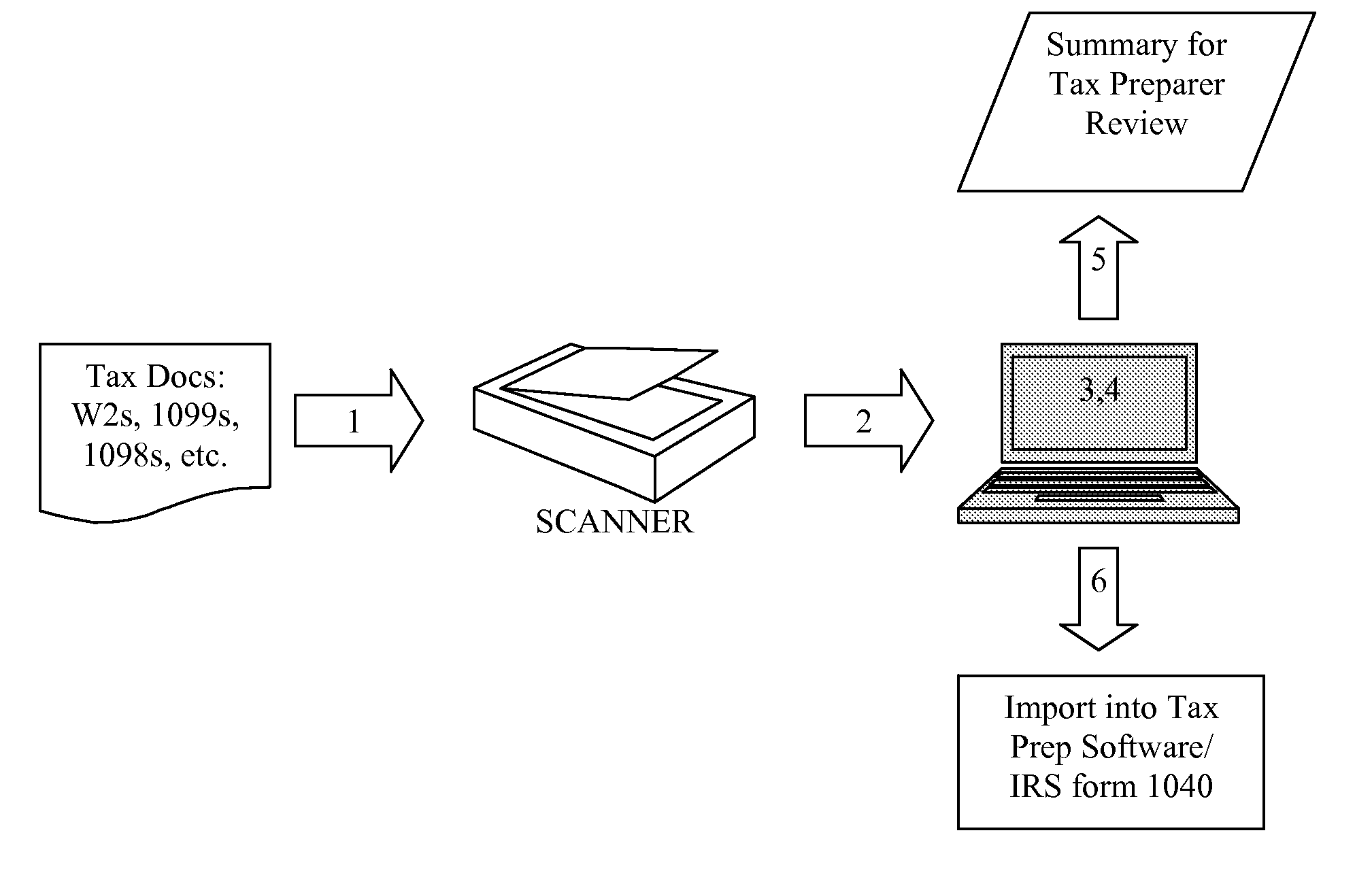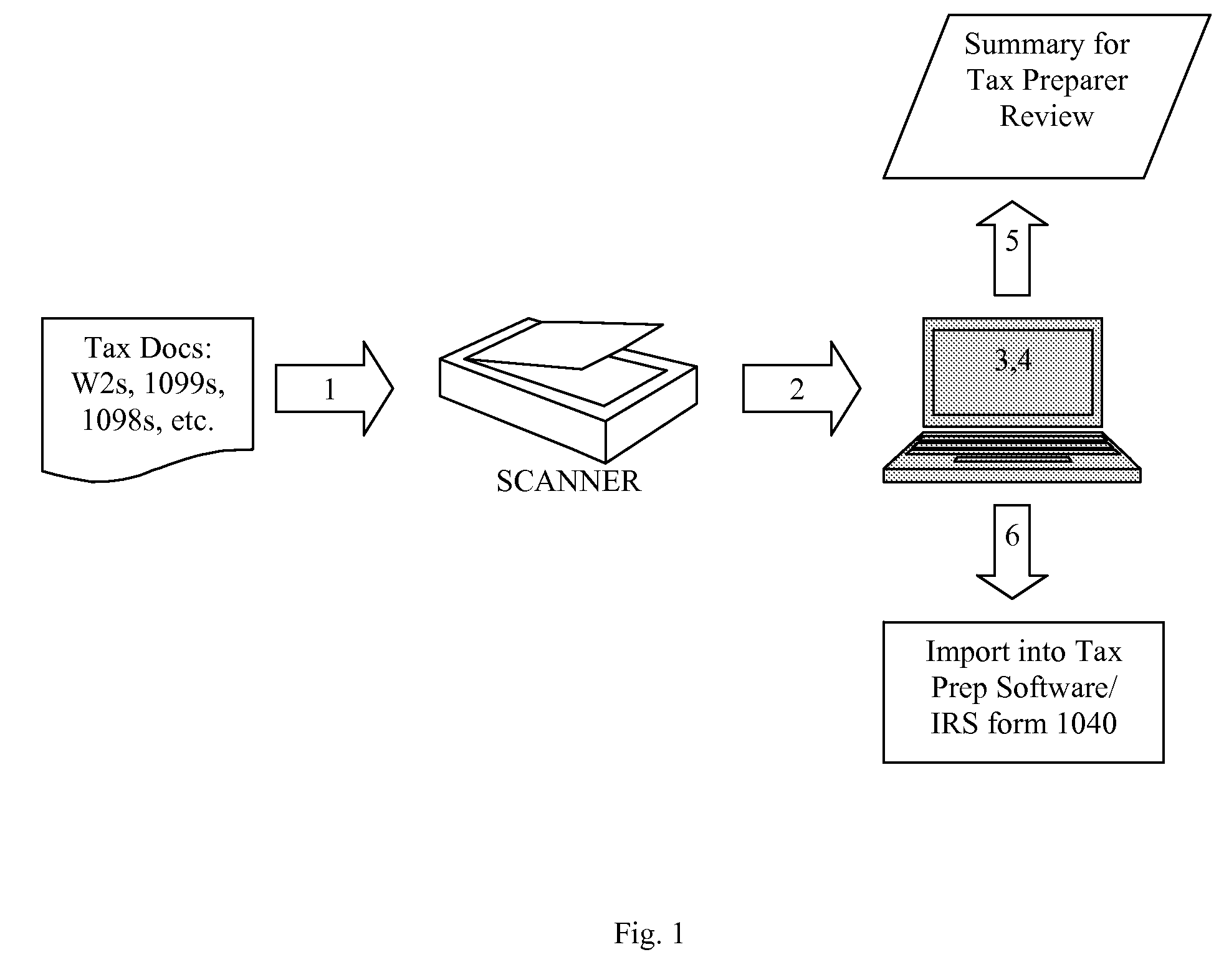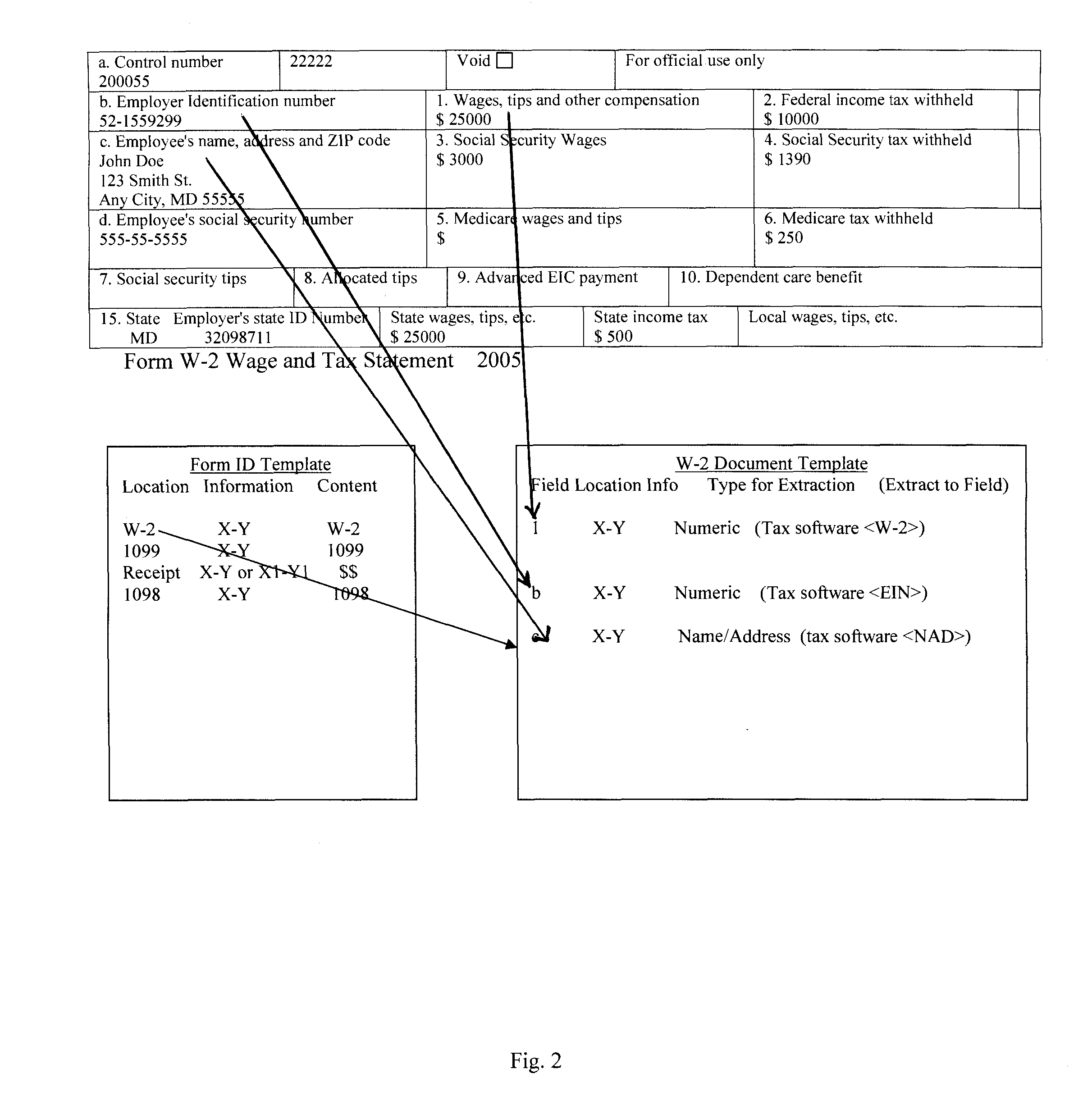Document Scanning and Data Derivation Architecture.
a data derivation and document technology, applied in the field of document scanning and data derivation architecture, can solve the problems of inaccurate social security numbers, numerical errors, and time-consuming tax preparation process, and achieve the effect of reducing or eliminating manual typing of tax data
- Summary
- Abstract
- Description
- Claims
- Application Information
AI Technical Summary
Benefits of technology
Problems solved by technology
Method used
Image
Examples
Embodiment Construction
[0016] Referring to FIG. 1.
[0017] Step 1) In accordance with an exemplary embodiment, the first step is to scan the tax documents (i.e. W-2, 1099, 1098 or any document relevant to, for example, tax filing) using a scanner connected to a PC. Other documents that could be scanned include but are not limited to: charitable receipts or checks, auto mileage logs, credit card statements, any deductible business receipts or worksheets including; meals and entertainment, cell phone, computer, fax and other deductible receipts and IRS Schedules B, C, D and F. While the invention will be described in relation to a tax forms and software, in general, any document can be scanned that would be applicable to the operating environment of the system. OCR technology reads the data from the scanned tax documents.
[0018] Step 2) An exemplary embodiment of the product then searches the recognized document for standardized IRS form headings (W-2, 1099, 1098, etc.). These form headings are found in spec...
PUM
 Login to View More
Login to View More Abstract
Description
Claims
Application Information
 Login to View More
Login to View More - R&D
- Intellectual Property
- Life Sciences
- Materials
- Tech Scout
- Unparalleled Data Quality
- Higher Quality Content
- 60% Fewer Hallucinations
Browse by: Latest US Patents, China's latest patents, Technical Efficacy Thesaurus, Application Domain, Technology Topic, Popular Technical Reports.
© 2025 PatSnap. All rights reserved.Legal|Privacy policy|Modern Slavery Act Transparency Statement|Sitemap|About US| Contact US: help@patsnap.com



